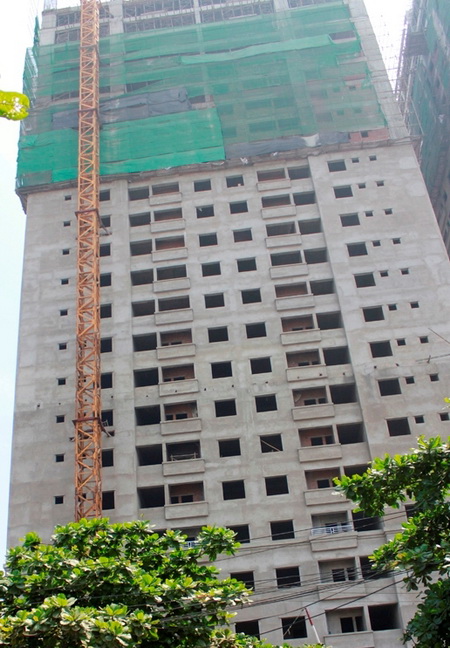Growing up in my suburban patch of Southern California, we kids were excited by the rise of a new pro baseball stadium accented by a towering structure shaped like the letter A. The Big A, as it is known, is crowned by a halo, signifying it as the home of the Angels.
These days Hanoi has five even bigger A’s (but no halos) that are aligned to straddle the Red River. These gargantuan A’s are the stanchions of the 5.5 kilometer Vinh Thinh bridge which, when completed, will be the longest span across this river, providing a four-lane shortcut to and from hi-tech zones, Noi Bai Airport and the greater urban glory of Hanoi.
Think of it, an icon in the making. Much as Long Bien bridge evokes historic Hanoi, Vinh Thinh will symbolize the new capital city.
After more than 2½ years living in this perplexing place, I’m sure I’m not the only expat – or Hanoi native, for that matter – who struggles to understand the capital’s grand plan, while hoping for the best.
I make no claims at expertise, but urban planning is a topic I frequently covered as a reporter in the vast, messy sprawl of Greater Los Angeles. On a recent trip to Seoul, South Korea – a sprawl that seems to work – serendipity enabled me to meet a world-class urban planner who created the master plan for the Seoul Olympics and the city’s efficient subway system. When I mentioned that I lived in Hanoi, did I detect a grimace? Or was that me?
To most expats and tourists, Hanoi is daunting, an old city that largely eschews grid patterns. I’ve tooled around on an old Yamaha Nuovo for a couple of years now, but once I’m off a familiar path, the meandering roads and intensely vertical architecture make it easy for me to lose my bearings. The other night, I decided to save cab fares and make the long drive from the Tay Ho District to 72-story Keangnam Tower, northern Vietnam’s tallest building. I was doing fine until the last few kilometers, when a wall of glittering buildings sporting KARAOKE blocked my view. Somehow I overshot the mark and made a few wrong turns working my way back.
As Hanoi expands outward, it is also planning a Metro fixed-rail system that would be elevated in some areas and underground in others. Some years from now, you might be able to board the Metro at a far-flung “new city” suburb and find your way to Hoan Kiem Lake. It might be wonderful and it’s certain to be expensive. But in the near future, I find myself wondering how old Hanoi and new Hanoi will mesh. Old Hanoi was a city on bicycles that made an easy transition to motorbikes. But now more Hanoians want autos – sedans, vans and SUVs – and the impact on traffic is obvious. And these thoughts bring to mind a political term I learned in LA: nimby.
“Nimby” stands for “not in my backyard.” It was the knee-jerk reaction the public just about everywhere had to projects ranging from freeways to landfills that were necessary for the greater good – but really should be someplace else. Even as an expat, I feel a nimby twitch when I look at new buildings that could add hundreds of new residents (and their motorbikes and cars) to my little patch of Hanoi in the expat-heavy Tay Ho District. Roads like Xuan Dieu, for example, can get snarled as it is.
But I also remember that Vietnam’s real estate market is suffering from premature erections. Privately backed housing, retail and office developments have delivered supply far ahead of demand. This is bad news for the economy – but not all bad for me getting from A to B.
The B, as it happens, is often the school where my children study and help coach baseball. The road now requires a dusty detour to enable work crews to smooth the asphalt for the new roadway that, in time, will flow with vehicles coming over the Vinh Thinh bridge into a corner of Hanoi that is being reinvented.
We expect Tay Ho will be our home for a few more years, so I see Hanoi’s growing, morphing cityscape with a mix of excitement and trepidation. Change is, of course, inevitable. One of Hanoi’s great charms is how Vietnam’s past coexists in such a palpable way with its present and future. This can be seen in its people, its lifestyle and its changing urban landscape.
Will the brave new Hanoi work? Beats me. But it will be interesting to witness the transformation.






















































